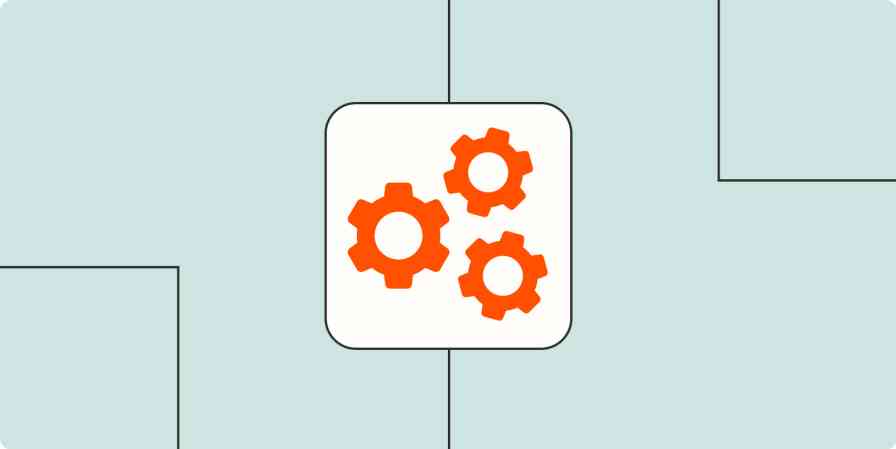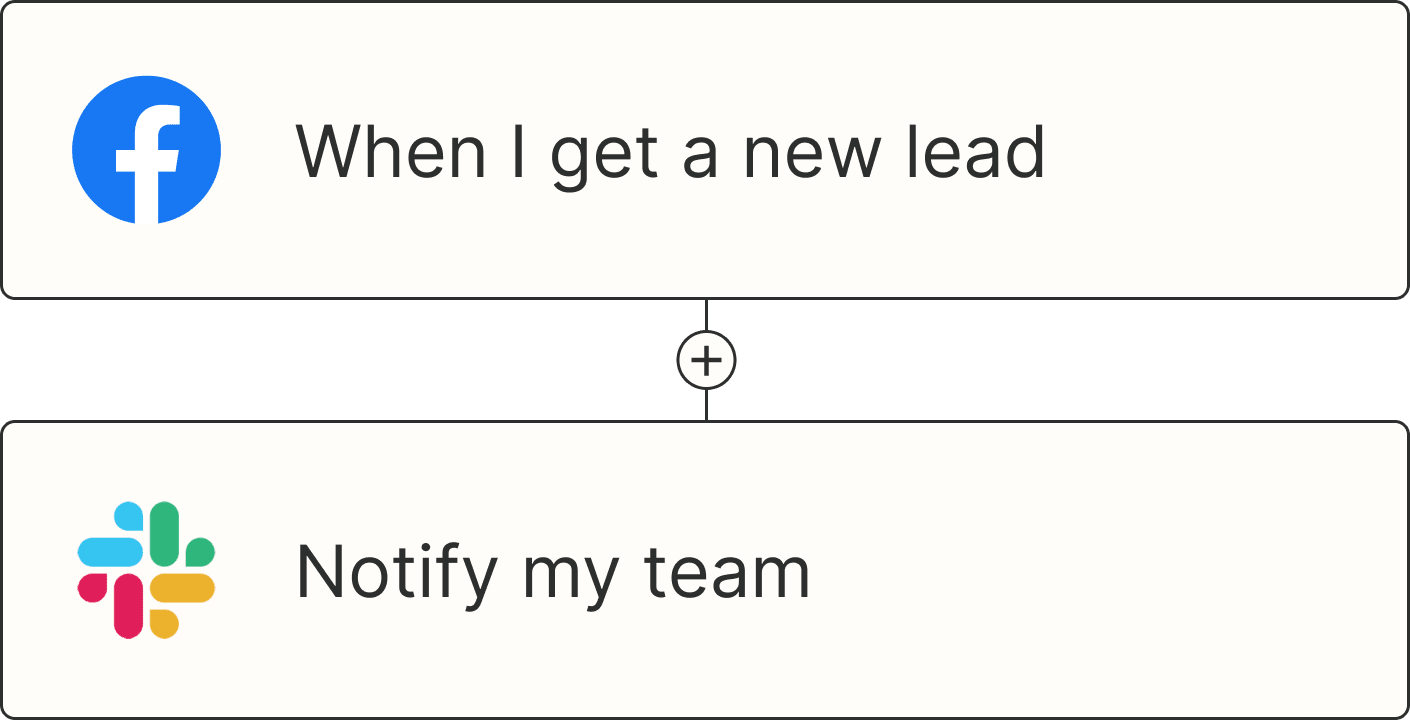It used to take a computer engineering degree and months of work to design a simple app—but not these days. Now, no-code app builders make it easy for even tech newbies to create custom tools for both front-end and back-end processes. You might build an app for your eCommerce store or paid course, for example, or turn your databases into interactive client portals and internal dashboards.
But your custom apps are only as powerful as they are efficient. It's still up to you to be aware of important updates, keep accurate data logs, and stay in touch with the app's users. Thankfully, there's also a no-code way to tell your app to communicate with the rest of your tech stack: Zapier's automated workflows.
In this article, we'll show you four of the best ways to automate your app builder so you can maximize your custom app's effectiveness while saving yourself valuable time.
New to Zapier? It's workflow automation software that lets you focus on what matters. Combine user interfaces, data tables, and logic with 6,000+ apps to build and automate anything you can imagine. Sign up for free to use this app, and thousands more, with Zapier.
Table of contents
To get started with a Zap template—what we call our pre-made workflows—just click on the button. It only takes a few minutes to set up. You can read more about setting up Zaps here.
Send notifications
There could be many reasons you might want to send a notification whenever a specified action occurs in your custom app. Whether it's sending follow-up messages to new subscribers or notifying your team of important updates, automation can keep the right people informed without bogging you down with busywork.
Send automated emails
For instance, say your customer-facing app lets users create accounts or make purchases. It's a good idea to send them a follow-up email whenever they take that desired action.
But managing welcome emails for each new customer or subscriber can quickly get unwieldy—especially as your app becomes more popular. Instead, set up a Zap that sends welcome emails automatically. You'll show new customers great customer service without being glued to your app builder's dashboard.
Or maybe you want an easy way to stay up to date on changes to an app database. You could send time-sensitive notifications to your team for new orders or customers. Or if your staff uses a custom employee portal, it could be useful to send your HR team automated emails whenever there's a new PTO request. These Zaps send custom emails to you or your team whenever a new record is created in your app builder of choice.
Send Gmail emails for new Bubble workflow trigger events
Send emails via Gmail for new Zapier actions in Glide
Send Gmail emails when new objects are created in Backendless
Send Welcome Emails to New Passion.io Plan Purchasers
Send Slack notifications
If your team lives in Slack instead of email, send those important updates to a Slack channel instead. You may want to notify your customer success team of new subscribers, update your IT team on incoming requests, or make company-wide announcements for new additions to your staff directory.
No matter your use case, these Zaps can get it done. Whenever a new workflow trigger event is received in Bubble or a new user is registered in Backendless, your chosen Slack channel will receive a custom message.
Send Slack channel messages for new workflow trigger events in Bubble
Get Slack notifications for new user registrations in Backendless
Connect your no-code app with your spreadsheet or database
Custom apps are powerful tools for a great user experience, but when it comes to data storage, nothing beats a good old-fashioned spreadsheet. For everything you store in a custom app—be it product inventory, work orders, employee data, or customer purchases—you likely want a backup database for that crucial information, as well.
But manually copying and pasting data from one app to another doesn't scale. And as your business grows, it'll become increasingly impossible to stay on top of new entries.
Thankfully, you can effortlessly sync your no-code app builder with your spreadsheet or database of choice using automation.
Connect with Google Sheets
These Zaps automatically copy new record information from Adalo, Bubble, and Glide to a Google Spreadsheet. Whether you're using a Google Sheet as a backup, for data analytics, or as a central hub for further automation, these integrations are a great starting point.
Create Google Sheet spreadsheet rows for new Adalo records
Create Google Sheets rows for new workflow trigger events in Bubble
Create Google Sheets rows for new Zapier actions in Glide
Or, if you prefer to add new information to a spreadsheet first, these Zaps let you skip manually copying and pasting that data into your app builder. Anytime there's a new spreadsheet row detected in Google Sheets, a new Softr user or Backendless object will be created automatically.
Create Softr app users for new Google Sheets spreadsheet entries
Create Backendless database rows for new Google Sheets rows
Connect with Airtable
If you use an Airtable database for storing and managing your business data instead, you can use these automated workflows to keep your Softr or Adalo apps in sync. That way, your data will stay effortlessly consistent and up-to-date across both systems.
Add to your email list
If you use no-code app builders to create customer-facing apps, it's crucial to ensure new app users are consistently added to your customer database. Anytime a customer makes a purchase from your eCommerce store or books an appointment for a service, you'll want to save their information for future marketing or customer service efforts.
But without automation, you'll be stuck manually exporting CSV files or copying and pasting user data from your app builder to Mailchimp. Not only is this process tedious and time-consuming, but it risks letting new users fall through the cracks.
Instead, use one of these Zaps to add or update subscribers in Mailchimp or Flodesk whenever a new account is created in your custom app.
Add new Passion.io accounts to Mailchimp subscribers.
Add Mailchimp subscribers from new records in Adalo
Back up files
Finally, whether your app contains product information, portfolio photos, or instructional videos, it's a good idea to keep a backup of important brand documents in your Google Drive. But uploading files to two apps takes double the time—and forgetting to create manual backups is all too easy.
Thankfully, you can skip the tedium of manual file management by automating your app builder. These Zaps keep you organized by uploading files to a designated folder in Google Drive whenever a new record or trigger event is detected in Adalo, Bubble, and Glide.
Add files to Google Drive for new records in Adalo
Upload files to Google Drive with new bubble workflow triggers
Get more out of your custom apps with automation
No matter how you use no-code app building, it takes a lot of effort and time to manage custom apps. You need to stay aware of important updates like new users or back-end requests. It's also important to keep backups of data and files, whether you're using a database or Google Drive (or both). And if your app is customer-facing, you'll need to copy new user information into your email marketing software to nurture new leads.
Doing all this work manually gets old fast, not to mention wastes all the time you saved by not having to learn to code (well, maybe not all the time, but at least one semester of a computer engineering program, right?).
Instead, you can use automation to connect your custom apps to the rest of your most-used tools—ensuring up-to-date records and timely responses, minus all the grunt work.
Ready to automate your no-code app? See what you can start building today.





